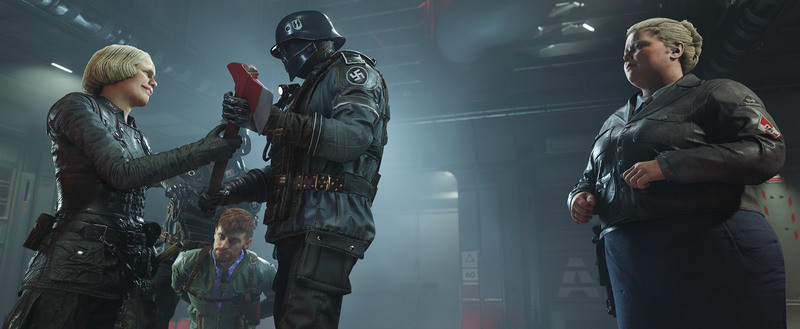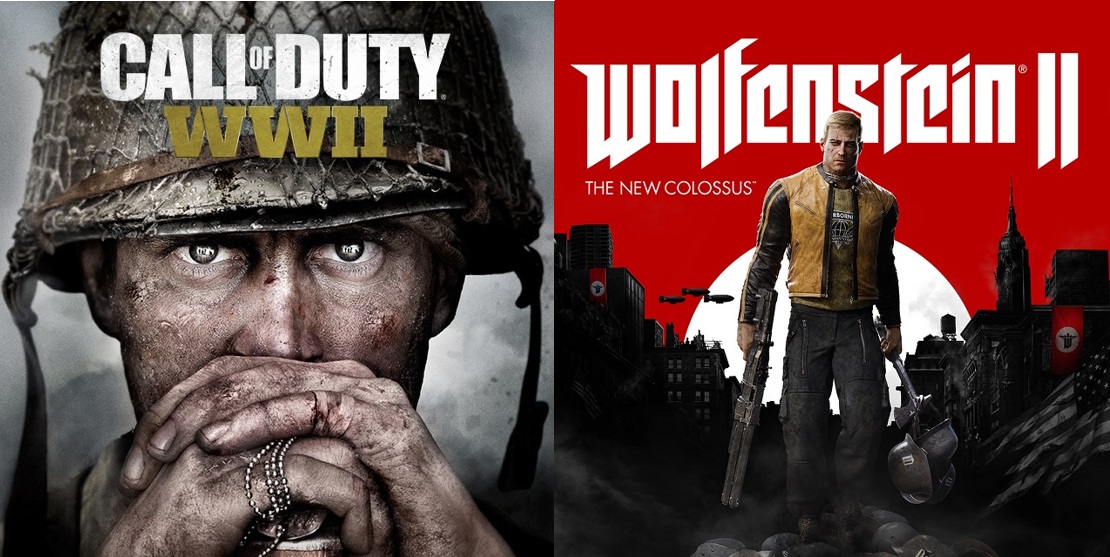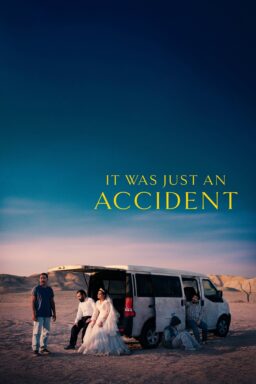Playing war games, especially those based on real-life conflicts, reminds one of the famous Francois Truffaut theory that “there is no such thing as an anti-war film.” The point was that all war films, even ones that capture the waking nightmare of war, glamorize it simply by virtue of turning it into art. It seems like an even more prominent problem when it comes to video games. How can a game developer use elements of the true horror and tragedy of war in a way that feels respectful and true but also maintains the threshold of entertainment required when one plunks down $60 for a game? And is it exploitative to make a game that uses elements of the Third Reich or the Holocaust? I’m sure these are questions asked by the teams behind two of the biggest games of 2017: Activision’s “Call of Duty: WWII” and Bethesda’s “Wolfenstein II: The New Colossus.” They’re both emotionally resonant games that use imagery that gains power from the men and women who died in the 20th century’s greatest international conflict. They achieve video game greatness in very different ways, but both owe a great deal not only to history but the fiction we’ve seen about World War II in other mediums.
It’s impossible to play “Call of Duty: WWII” and not see the influence of Steven Spielberg all over it. Not only does it open on the beaches of Normandy on D-Day in a sequence incredibly reminiscent of the opening scenes of “Saving Private Ryan,” but the game unfolds over a series of episodes set across the European front in the months after D-Day that will undoubtedly remind players of HBO’s “Band of Brothers,” another Spielberg project that redefined the way we see WWII in entertainment. The narrative of the game features a variation on the men of that show’s “Easy” Company, guys who go through Hell but do so arm in arm, and vow to never leave a man behind.

As with several iterations of “Call of Duty,” the campaign in this year’s model includes a high degree of star power as well. You play U.S. Army Private First Class Ronald Daniels of the 1st Infantry Division. You land on those bloody beaches with a platoon led by Technical Sergeant William Pierson (Josh Duhamel) and First Lieutenant Joseph Turner (Jeffrey Pierce). This is not your old-fashioned video game voice work—it’s more akin to modern motion capture in the sense that an actor like Duhamel is unmistakable, and the performer gives a strong performance here, capturing a man who goes through Hell. He’s accompanied by Jonathan Tucker (“The Virgin Suicides,” TV’s “Parenthood”) as Private Zussman and Jeffrey Pierce as First Lieutenant Turner, two more platoon-mates of Daniels who drive through the European front of the second World War.
And I mean drive. If you’re not familiar with the “Call of Duty” games and are wondering the degree of realism here, it’s minimal in terms of actual combat. This is still a shooter game through and through, and explosive action is the key trait of the series. I would estimate Daniels kills roughly 500 Nazis over the course of the campaign, and that number may actually be low when one considers the vehicular carnage and tank combat that ensues. It creates an interesting dynamic in which “Call of Duty” is undeniably unrealistic and yet using imagery and historical events at the same time that are based on history. You’ll encounter action sequences at Aachen and the Battle of Hürtgen Forest. As the game gets closer to the concentration camps, it’s hard to shake the feeling that there’s a bit of a disconnect between the truth and the non-stop action.
Having said that, “Call of Duty” never quite crosses that line into what I would call exploitation. It gets close but pulls back just enough to feel like it appropriately pays tribute to veterans of World War II without turning their horror into entertainment. It’s a dark, violent, brutal game, and it connects narratively much more successfully than recent “CoD” campaigns, which had gotten increasingly closer to something like “Starship Troopers” with their futuristic warfare. This is the best “Call of Duty” campaign in years, and the on-the-ground combat aesthetic translates well to a typically-robust multiplayer portion. Again, the “CoD” games had gotten a bit too sci-fi even in their multiplayer, and so it’s nice to see a game in which you can’t jump over buildings or use futuristic drones. I’m still more of a “Battlefield” multiplayer guy, but this is a strong, addictive alternative. All in all, it’s the best “Call of Duty” game since 2012’s “Black Ops II,” and maybe even longer.

“Wolfenstein II: The New Colosssus” doesn’t use history in the same way, but it’s an undeniable element of this complex narrative, one that reimagines, like “The Man in the High Castle,” a world in which the Allies lost and the Third Reich has taken over the world. Like “CoD,” the creators of this game use imagery that will connect because of history. And it’s also a game that feels strikingly current at the same time. There’s a crucial scene that takes place at a gigantic Nazi rally on the mall in Washington DC, and seeing swastika-wearing soldiers in front of the Lincoln Memorial has power because of the truth of the real history (and even the current drama) it’s exploiting. Who would have guessed a game about killing Nazis would be so powerful in 2017?
Certainly not those of us who thought the “Wolfenstein” series was kaput. Id Software’s ‘90s iteration of “Wolfenstein” was as influential as nearly any of its era. “Doom” gets a lot of credit for building the foundation of the first-person shooter, but “Wolfenstein 3D” certainly laid a few bricks. The series was relatively dead for the next quarter-century or so until “Wolfenstein: The New Order” shocked everyone by being one of the best games of 2014. “The New Colossus” is a direct sequel to that game, continuing the story of William “B.J.” Blazkowicz, a WWII vet willing to give everything (and I mean everything) to stop the Nazis. The game unfolds in a relatively straightforward way, blending stealth elements with high-powered combat. In this alternate universe, there was some very futuristic warfare going down in 1961.

“The New Colossus” is an imperfect game in that it has elements that frustrated me more than either “The New Order” or its expansion “The Old Blood.” Some of the stealth elements get repetitive and there are checkpoints that often feel too far apart, a factor hampered further by lengthy load times. Imagine fighting through dozens of Nazis for several minutes but not quite making it and then waiting to start where you were what feels like ages ago. And there are massive difficulty spikes here. What I mean is that some of the major action sequences in the game drove me nearly insane in ways that no other game has this year, and I’ve finished some tough ones.
Having said that, “The New Colossus” is as ambitious a game as I’ve played this year when it comes to narrative. As much as “Call of Duty: World War II” owes a debt to “Saving Private Ryan” and “Band of Brothers,” “The New Colossus” feels like a truly original piece of fiction, one that blends history with a unique, unpredictable vision. I have played dozens of games this year that greatly reflect the world of film, and I’ve tried to make those the focus of this first year of video game coverage on the site, but “The New Colossus” feels like something special—a game that works from film, sci-fi literation, comic books, history, and even Prestige TV. Video games have become a melting pot of influences in a striking, creative way, which is why we chose to start covering them here. And these two games, by creatively looking back, hint at a vibrant future for the medium.












